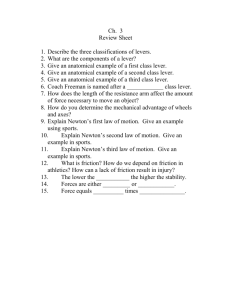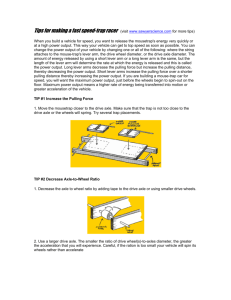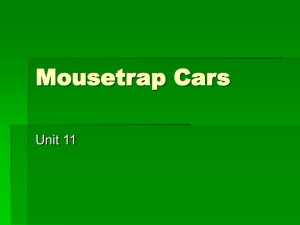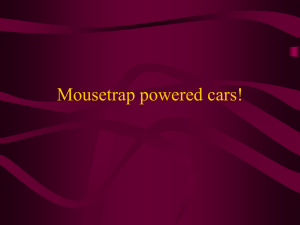A Mousetrap Powered Racer
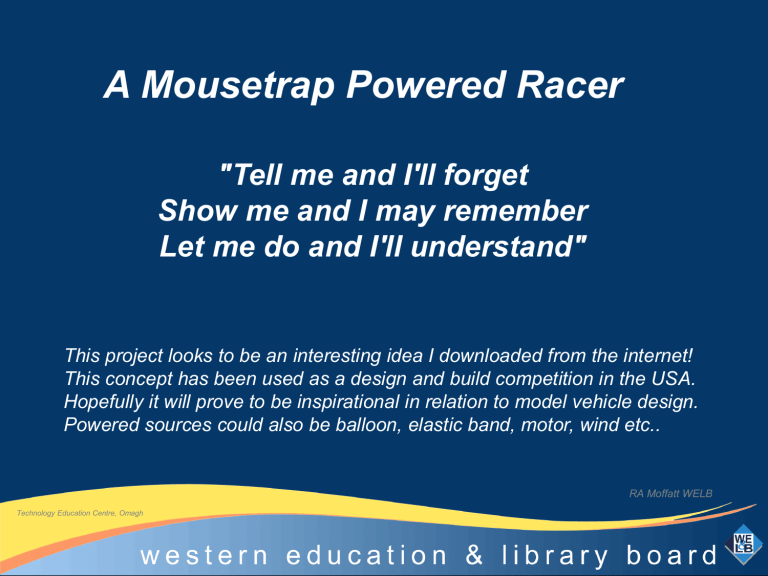
A Mousetrap Powered Racer
"Tell me and I'll forget
Show me and I may remember
Let me do and I'll understand"
This project looks to be an interesting idea I downloaded from the internet!
This concept has been used as a design and build competition in the USA.
Hopefully it will prove to be inspirational in relation to model vehicle design.
Powered sources could also be balloon, elastic band, motor, wind etc..
RA Moffatt WELB
Technology Education Centre, Omagh
A Mousetrap Powered Racer click on graphic to view web-site
www.teachergeek.org/forum/index.php
Inertia
is the resistance that an object has to a change in its state of motion, the more inertia an object has the more force that will be required to change is state of motion. A heavy car will required more pulling force than a lighter car for equal acceleration; therefore, lighter cars will be easier to accelerate
Rotational inertia
is the resistance that a wheel or rotation object has to changing its state of rotation. Similar to inertia but dealing with a rotating object. The less rotational inertia that an object (wheel) has the less the torque that will be needed to change its state of rotation or the easier it will be to accelerate
Friction:
There are two types of friction , surface friction and fluid friction. Surface friction is caused by the rubbing of two surfaces in contact with on another. Where your axle connects to the frame of your vehicle is one place that you will find surface friction on your car. By reducing the surface friction with graphite powered or ball bearings you will see an increased performance with your vehicle. Traction is a wanted surface friction that is between your vehicles wheels and the flooring, increasing your tracking will allow for greater accelerations because it will take more torque to make the wheels spin out or break loose. Fluid friction is caused by an object trying to move the air out of the way. Make your car aerodynamic so that it is easier to push the air aside
Torque
depends on the length of your mouse trap cars lever arm and the strength of the mousetrap's spring. A long lever arm has the same torque as a shorter arm. The difference between a long lever arm and a short lever arm is that you get more pulling force with a short arm than a long arm. To maximize your acceleration you want a shorter lever arm. Keep in mind that if your arm is too short the force will be large enough to cause the wheels to spin-out, wasting energy
Calculations you can do with mousetrap cars
* Total Rolling Friction
* Coefficient of Rolling Friction
* Total Potential Energy
* Maximum Total Kinetic Energy
* Work Done Moving Car
* Gear Ratios
* Mouse Trap Spring Constant
* Rotational Inertia of Wheels
* Pulling Distance and Gear Ratio
* Max Acceleration before Tire Slippage
* Predicted Total Travel Distance
* Efficiency with Distance Cars
* Efficiency with Speed Cars
* Centre of Mass
* Normal force on Wheels
* Min String Tension Needed to Move
* Calculate Tire Grip on Floor
Graphing Ideas for mousetrap powered cars
* distance vs . time
* velocity vs.
time
* acceleration vs.
time
* pulling force vs.
degrees of spring angle
* potential energy vs.
time
* kinetic energy vs.
time
* work vs.
time
* string tension vs.
travelled distance
* lever arm length vs.
time
* lever arm length vs.
pulling distance
How to build a Mouse-Trap Racer click on graphic to view web-site http://users.bigpond.net.au/mechtoys/mouse.html?CFID=7
208043&CFTOKEN=43557668&jsessionid=06304bc794e
0$13$271$
Heath Robinson


